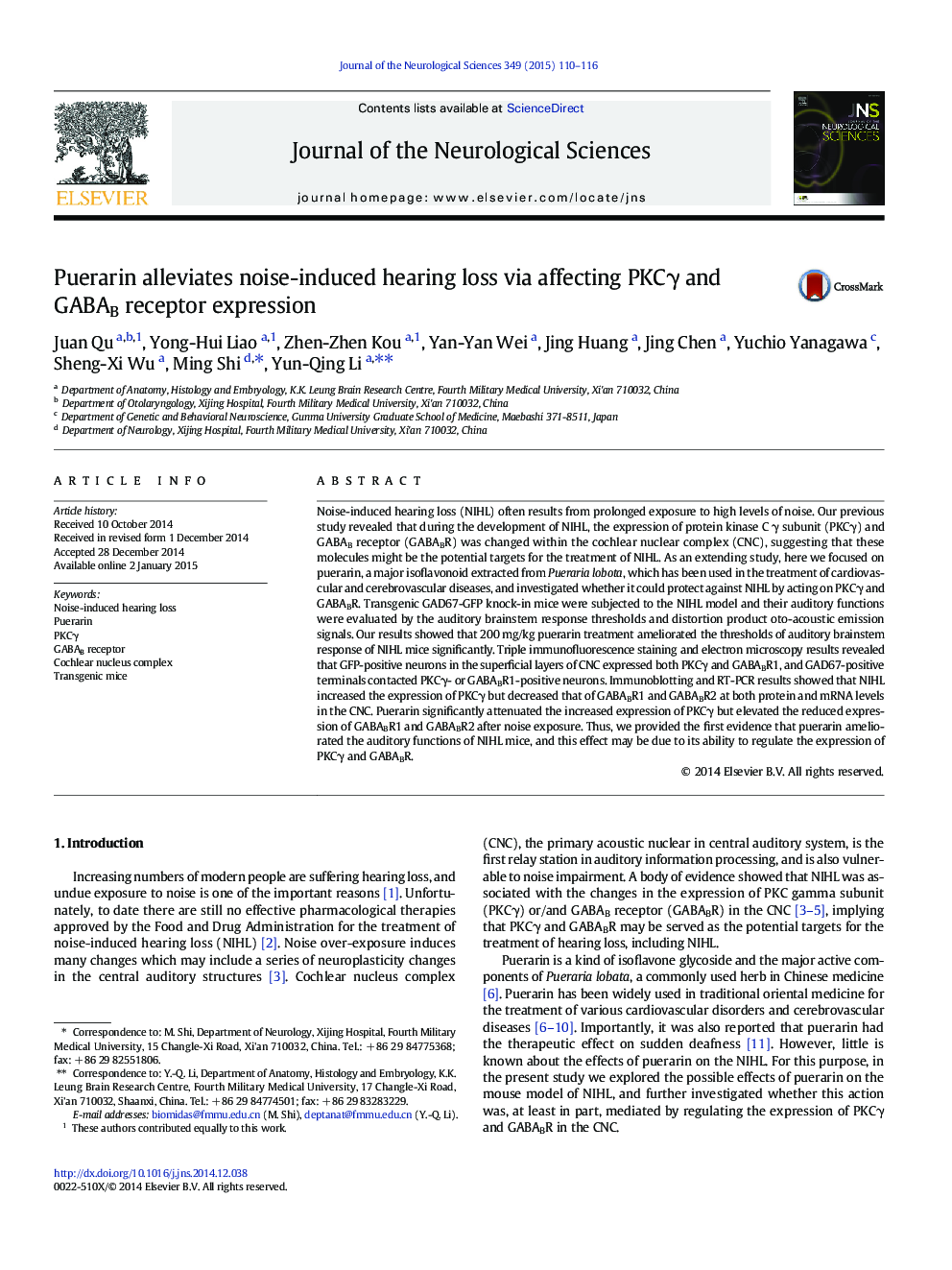| Article ID | Journal | Published Year | Pages | File Type |
|---|---|---|---|---|
| 8276448 | Journal of the Neurological Sciences | 2015 | 7 Pages |
Abstract
Noise-induced hearing loss (NIHL) often results from prolonged exposure to high levels of noise. Our previous study revealed that during the development of NIHL, the expression of protein kinase C γ subunit (PKCγ) and GABAB receptor (GABABR) was changed within the cochlear nuclear complex (CNC), suggesting that these molecules might be the potential targets for the treatment of NIHL. As an extending study, here we focused on puerarin, a major isoflavonoid extracted from Pueraria lobota, which has been used in the treatment of cardiovascular and cerebrovascular diseases, and investigated whether it could protect against NIHL by acting on PKCγ and GABABR. Transgenic GAD67-GFP knock-in mice were subjected to the NIHL model and their auditory functions were evaluated by the auditory brainstem response thresholds and distortion product oto-acoustic emission signals. Our results showed that 200 mg/kg puerarin treatment ameliorated the thresholds of auditory brainstem response of NIHL mice significantly. Triple immunofluorescence staining and electron microscopy results revealed that GFP-positive neurons in the superficial layers of CNC expressed both PKCγ and GABABR1, and GAD67-positive terminals contacted PKCγ- or GABABR1-positive neurons. Immunoblotting and RT-PCR results showed that NIHL increased the expression of PKCγ but decreased that of GABABR1 and GABABR2 at both protein and mRNA levels in the CNC. Puerarin significantly attenuated the increased expression of PKCγ but elevated the reduced expression of GABABR1 and GABABR2 after noise exposure. Thus, we provided the first evidence that puerarin ameliorated the auditory functions of NIHL mice, and this effect may be due to its ability to regulate the expression of PKCγ and GABABR.
Related Topics
Life Sciences
Biochemistry, Genetics and Molecular Biology
Ageing
Authors
Juan Qu, Yong-Hui Liao, Zhen-Zhen Kou, Yan-Yan Wei, Jing Huang, Jing Chen, Yuchio Yanagawa, Sheng-Xi Wu, Ming Shi, Yun-Qing Li,
